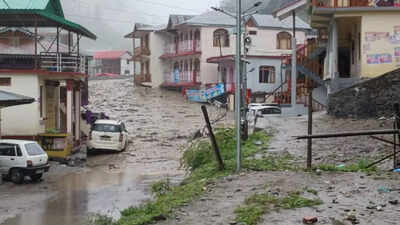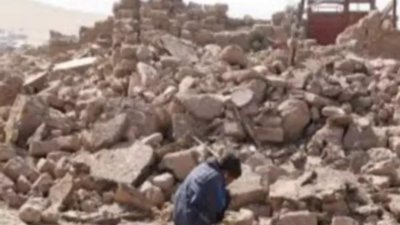Uttarkashi Cloudburst News: Unchecked construction, tourism push & human interference triggered flood havoc, say experts; rules flouted for profit | Dehradun News

DEHRADUN: Unchecked construction and human interference in the ecologically fragile Bhagirathi Eco-Sensitive Zone (BESZ) — spanning 4,179 sq km from Gaumukh to Uttarkashi — may have significantly worsened the impact of the flood that ravaged Dharali village near Gangotri in Uttarkashi district, according to environmentalists. Experts said that the scale of devastation points to deeper, systemic issues rooted in years of unregulated development in one of the Himalayas’ most vulnerable regions.Calling for urgent reforms and stricter enforcement of land-use regulations along the Bhagirathi River and its tributaries, Mallika Bhanot, a member of BESZ monitoring committee, said, “This once again shows how vulnerable the Himalayas are, and we must wake up and stop playing with our environment. Any vulnerable area requires protection and conservation. Unregulated anthropogenic (human-induced environmental change) activity only adds to the risk, as was evident in the shocking footage of the Kheer Ganga stream turning into a torrent.“Other ecologists echoed similar concerns, pointing out that rampant construction in floodplains disrupts natural drainage, accelerates land degradation and contributes to rising carbon emissions — all of which can impact local microclimates.“These carbon footprints are very high and carry serious implications for the surrounding ecosystem,” said professor Sunil Nautiyal of the Centre for Ecological Economics and Natural Resources, Karnataka, and former director of GB Pant National Institute of Himalayan Environment.He added, “The Himalayan ecology is uniquely vulnerable, with many species classified as keystone or highly sensitive to even minor environmental shifts. We must begin accounting for the carbon cost of all development in these fragile zones.”Nautiyal also stressed the urgent need for valley-specific weather and climate monitoring systems. “Regular, intensified monitoring is essential to understand the evolving impacts of climate change across different Himalayan valleys. With telemetric weather stations covering all hoblis (a cluster of adjacent villages) and 6,500 rain gauge systems across gram panchayats, Karnataka offers a model that must be replicated across Himalayan states to strengthen climate monitoring infrastructure,” he added.On the ground, residents said the push to boost tourism revenue is fuelling unsustainable development. “In the race to earn from tourism, tree felling and construction are happening at an unprecedented scale. There are no robust systems in place to manage disasters in vulnerable stretches of BESZ, despite the region having witnessed similar devastating floods in the past,” said Suresh Bhai, an Uttarkashi-based environmentalist and founder of the Himalaya Bachao Andolan.Amid mounting concerns over regulatory oversight in the region, officials pointed to jurisdictional limitations. “The area where the flash flood occurred doesn’t fall under our jurisdiction. As it lies in an eco-sensitive zone, clearances must have come from the stipulated authorities,” said Vineet Rastogi, executive engineer at Uttarkashi District Level Development Authority.




